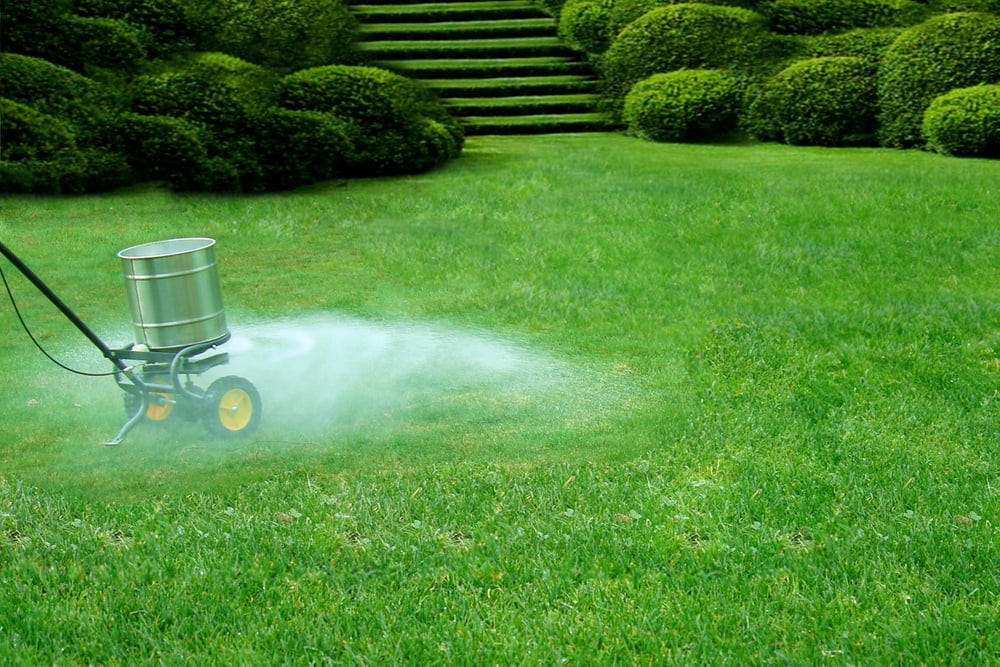In order for the lawn to grow and thrive, it needs a balanced pH value in addition to regular mowing and fertilizing. And you can achieve this with lime. Here you can find out what you should pay attention to when liming your lawn.
After a brown and muddy winter, all amateur gardeners want a green and lush lawn that shines in its full glory. But, unfortunately, you can not get it just like that. It takes a lot of care and timing to get a healthy lawn.
Contents
When should you lime the lawn?
To avoid harming the lawn in your yard, be sure to only add lime to it when it needs it. All the additives in common fertilizers are more likely to harm the lawn than help it.
The result of this is over-acidified soil that does not give any blade of grass the opportunity to grow healthily. Lime then provides the lawn with the nutrient it needs to grow nicely.
You can find appropriate test kits* in stores that allow you to determine the pH of the soil. Especially on moist and compacted soils, over-acidification often occurs. Since low pH values limit the vitality of lawn grasses, there are certain limits below which you should lime your lawn.
Interpret lawn pH value
- pH value between 5.5 and 6 = optimal lawn
- pH-value below 5.5 = liming the lawn is the order of the day
- pH-value significantly above 6 = do not lime your lawn under any circumstances
It is a misconception that you should lime your lawn to prevent moss infestation. Lime actually serves as a nutrient for moss, clover and nettles and can even accelerate growth.
Experts therefore advise against unnecessary liming, as it can lead to the death of the “good” grass plants. A pH test is therefore always useful! How to start a soil analysis, you can also read here: Analyze and improve garden soil.
When it comes to dosage, it is important to keep in mind:
- For a sandy soil, with a pH below 5.5, you need about 150 to 200 grams of lime per square meter.
- For clay soils, with a pH of about 6.2, you need twice that amount, 300 to 400 grams per square meter.
- If the pH exceeds 6.9, no lime is needed.
The right time to lime the lawn
As soon as the last snow has fallen, you can devote yourself extensively to your lawn in the spring. Often this time falls in March or April. The only important thing is that the soil is still nice and moist. Experts advise liming the lawn every two to three years.
If you missed the timing in the spring, it’s not a problem. You can still lime your lawn in the fall. The only important thing here is that the soil and the weather are moist to support deacidification.
Lime lawn: how to do it
As already described, the perfect weather is the wet spring.
So that the soil can absorb the lime well, you should scarify it beforehand. By loosening and aerating the soil, you help your lawn to develop its full strength during the upcoming growth.
The best way to distribute the lime is to use a spreader. This ensures that the lime is precisely dosed and your skin has no direct contact with the lime granules, which could cause skin irritation. If you do not have a trolley at hand, be sure to wear gloves when spreading!
Immediately following liming, water your lawn sufficiently and then let it rest for four weeks so that it has enough time to absorb the lime and neutralize. Only then can you fertilize or reseed it.
Read even more tips about lawns here:
Tips for saving water in the garden
Before you apply lime to your lawn, be sure to test the ph of the soil. If in doubt, it’s better to forgo the lime. Too much fertilizer and care can also be harmful. A lot does not always help a lot.


